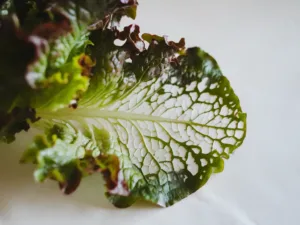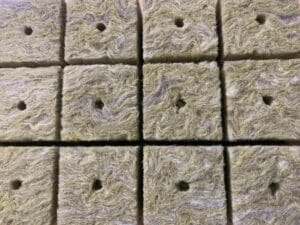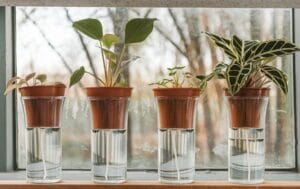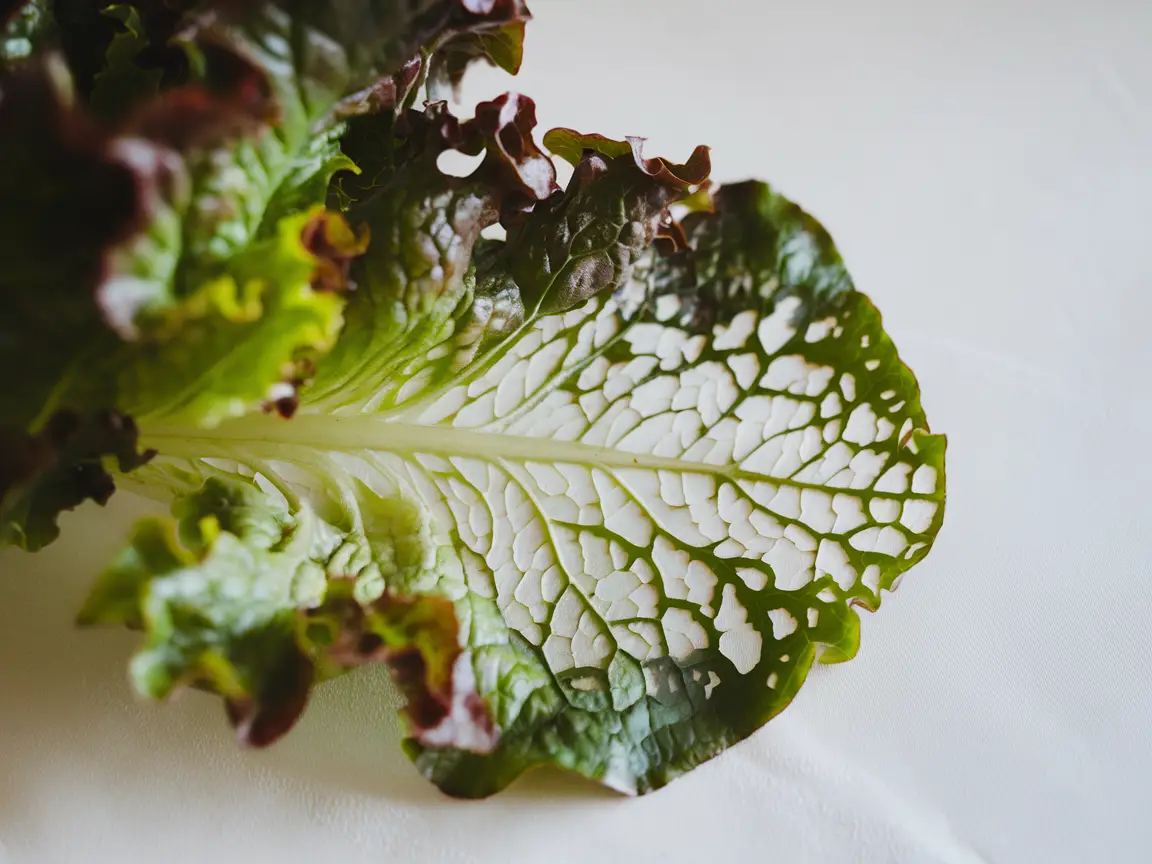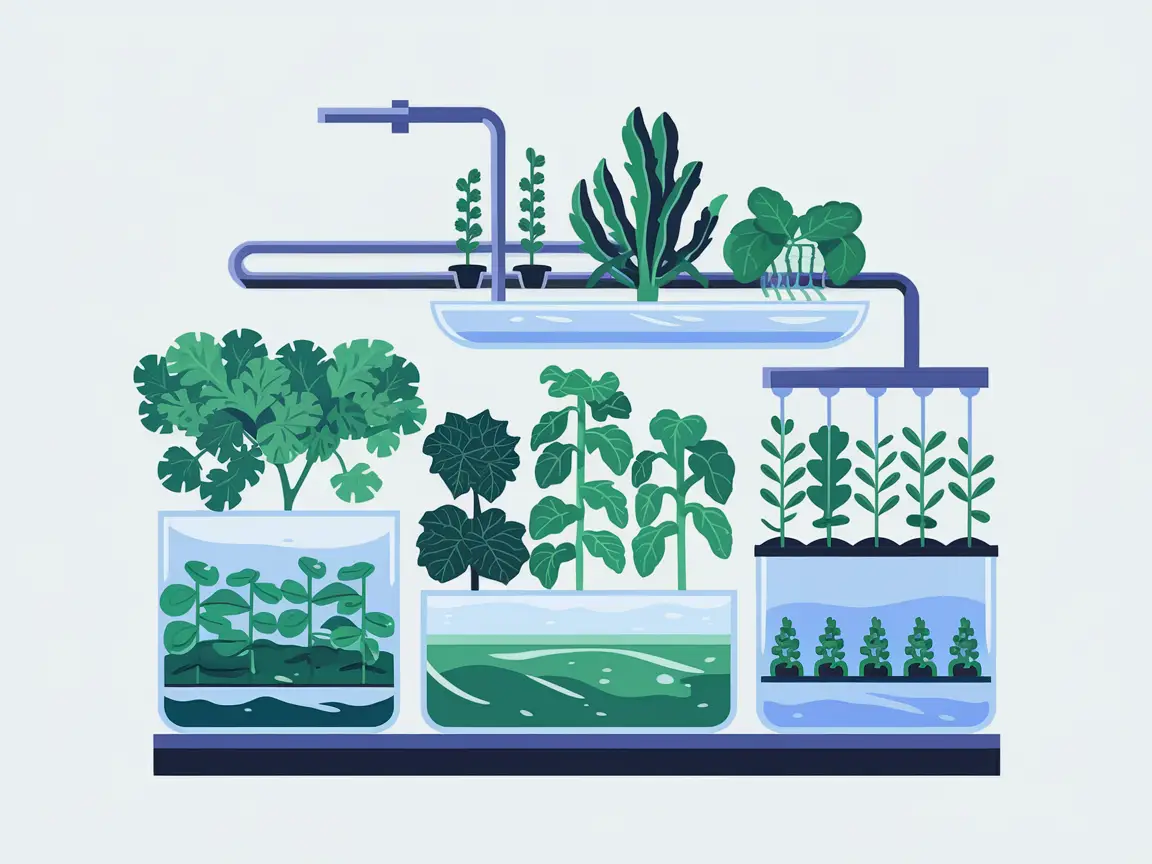When you delve into the fascinating world of hydroponics, you’ll quickly discover that choosing the right substrate plays a crucial role in the success of your system. Substrates not only provide plant stability but also influence the availability of water, oxygen, and nutrients. This article explores popular hydroponics substrates and their properties, as well as some lesser-known but interesting options – particularly sustainable substrates gaining importance in modern hydroponics.
Why Are Hydroponics Substrates So Important?
Substrates in hydroponics fulfill many functions: they offer root support, store water and nutrients, and ensure adequate aeration. Unlike traditional agriculture, where soil is the main source of nutrients, hydroponics delivers nutrients directly to plants through a nutrient solution. The substrate indirectly affects the roots’ ability to absorb these nutrients and should be selected carefully.
Requirements for a Good Hydroponics Substrate
Not every substrate is suitable for every hydroponic system or plant type. Therefore, it’s essential to understand the requirements of an ideal substrate:
- pH below 6.5: pH influences nutrient absorption in plants.
- High Capillarity: The substrate should effectively absorb and transport water.
- High Air Capacity: Roots need sufficient oxygen.
- Low Salt Content: High salt levels can harm roots.
- High Water-Holding Capacity: The substrate should be able to retain enough water.
- High Structural Stability: It should not disintegrate even when constantly moist.
- Good Re-Wettability: The substrate should readily reabsorb water after drying.
- Low Microbial Activity: Pest and disease presence should be minimized.
- Free of Weeds and Pests: Cleanliness is essential.
Overview of Popular Hydroponics Substrates
Here are some of the most popular hydroponics substrates, along with their characteristics, pros, and cons:
1. Coconut Coir
Coconut coir is an organic by-product of the coconut industry and is becoming increasingly popular in hydroponics. It has excellent water retention capacity, is pH neutral, and offers good aeration. Due to its sustainability, it is an eco-friendly alternative to rockwool.
Advantages:
- Good water-holding capacity and aeration
- Organic and compostable
- pH neutral
Disadvantages:
- May cause waterlogging
- Possible salt content that needs rinsing
2. Perlite
Perlite is a lightweight volcanic glass often used in hydroponic systems for its excellent drainage properties. It retains only a small amount of water, preventing overwatering of roots.
Advantages:
- Excellent drainage and aeration
- Lightweight, easy to handle
- pH neutral
Disadvantages:
- Low water-holding capacity
- Can create dust, which may be irritating
3. Vermiculite
Vermiculite is an expanded mineral substrate that holds water exceptionally well. It’s ideal for plants that prefer high humidity and is often mixed with perlite to achieve a better air-water balance.
Advantages:
- High water-holding capacity
- Good cation exchange capacity
Disadvantages:
- Poor drainage
- Can lead to root rot if kept too moist
4. Expanded Clay
Expanded clay, or clay pellets, are made from baked clay and offer a high air capacity, making them ideal for systems requiring good aeration. They are reusable, pH neutral, and suitable for a variety of hydroponic systems.
Advantages:
- Reusable
- Good air capacity
- Easy to clean
Disadvantages:
- Low water-holding capacity
- Heavier than other substrates
5. Rockwool
Rockwool is made from molten rock spun into fibers. Known for its excellent air and water retention, it is suitable for almost all hydroponic systems. However, Rockwool is not biodegradable and can cause skin irritation when handled.
Advantages:
- Excellent air-water balance
- Lightweight and easy to handle
Disadvantages:
- Not environmentally friendly
- Can be harmful when dry
Lesser-Known and Sustainable Hydroponics Substrates
In addition to well-known substrates, there are also lesser-used options gaining importance in sustainable hydroponics:
6. Coconut Chips
Coconut chips, a coarser version of coconut fibers, offer excellent air capacity and prevent waterlogging. Due to their size, they’re not ideal for germination but are very useful for larger plants.
Advantages:
- High air capacity
- Good cation exchange capacity
Disadvantages:
- High buoyancy, which can affect stability
- Low water-holding capacity
7. Rice Husks
Rice husks, a by-product of the rice industry, offer a sustainable option for hydroponics substrates. They have good air capacity and decompose slowly, making them easy to handle.
Advantages:
- Sustainable and compostable
- Good aeration
Disadvantages:
- High manganese content (problematic only at low pH levels)
- Not reusable
8. Wood Shavings
Wood shavings, especially sawdust, are another organic alternative. They offer good water retention and are biodegradable. It is essential to use only 100% organic shavings without chemical additives to avoid harming the plants.
Advantages:
- Compostable and sustainable
- Good water-holding capacity
Disadvantages:
- Risk of mold
- Can attract pests
9. Pumice Stone
Pumice stone is a volcanic rock popular for its good aeration and stability. It is heavier than perlite, making it more stable for larger plants, and holds slightly more water.
Advantages:
- Good drainage and aeration
- Reusable
Disadvantages:
- Heavier than other substrates
- Lower availability and higher cost
Sustainable and Innovative Substrate Options
Hydroponics is constantly evolving, and more innovative substrate options are emerging, both functional and sustainable. These include:
- Growstones: Made from recycled glass, these substrates provide excellent drainage and aeration and are eco-friendly. Unfortunately, production was halted in 2019, and they are now hard to find.
- Oasis Cubes: These lightweight cubes are easy to handle and provide a good balance between air and water retention.
The Right Substrate Choice
There is no perfect substrate suitable for every plant and hydroponic system. The right substrate choice depends on the specific needs of the plants, the system, and sustainability goals. Often, a mix of multiple substrates is the best solution, combining the benefits of different materials.
Before choosing a substrate, consider your plants’ requirements and the hydroponic system you are using. Use this guide as a reference to find the substrate that best suits your needs. Feel free to comment on which substrate interests you most or if you would like more information on a particular one!
With this knowledge, you are ready to explore the world of hydroponics and create your own green paradise.
Enjoy!

